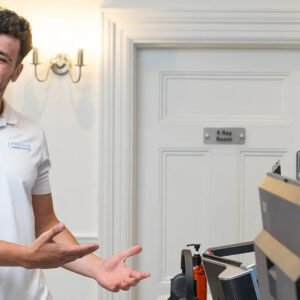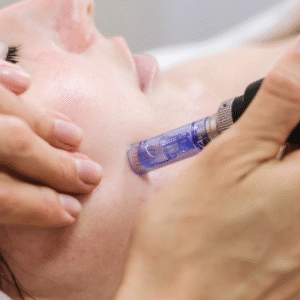Causes of Piles in Women: Understanding Symptoms, Effects, and Diagnosis
Piles, also known as hemorrhoids, are swollen veins that develop around the rectum or anus, causing pain, itching, and discomfort. While this condition affects both men and women, piles in women are particularly common due to factors such as pregnancy, hormonal changes, and lifestyle patterns. Understanding the causes of piles in women, along with their symptoms, effects, and methods of diagnosis, is essential for early detection and effective treatment.
Causes of Piles in Women
Piles develop when there is excessive pressure on the veins in the lower rectum, leading them to swell or bulge. Several factors can contribute to this condition, especially in women:
1. Pregnancy and Childbirth
Pregnancy is one of the leading causes of piles in women. During pregnancy, the growing uterus exerts pressure on the pelvic veins and the inferior vena cava, which can slow blood flow from the lower body. This increased pressure causes the veins around the rectum to swell.
Additionally, hormonal changes during pregnancy—particularly the rise in progesterone—relax the walls of blood vessels, making them more susceptible to swelling. The strain during labor and delivery can further worsen this condition, often resulting in postpartum piles.
2. Chronic Constipation
Women who frequently suffer from constipation are at a higher risk of developing piles. Straining during bowel movements increases pressure in the rectal veins, leading to inflammation and swelling. Constipation may arise due to low fiber intake, dehydration, lack of physical activity, or hormonal fluctuations during menstruation and pregnancy.
3. Hormonal Changes
Female hormones play a crucial role in the development of piles. Hormonal fluctuations during menstruation, pregnancy, or menopause can slow digestion and affect bowel movement regularity. These hormonal changes often lead to constipation, indirectly increasing the likelihood of hemorrhoids.
4. Sedentary Lifestyle
Sitting for long periods—especially in office jobs or during pregnancy—can restrict blood flow in the lower body and increase pressure around the anal region. This lack of movement causes the veins in the rectum to become swollen and inflamed over time.
5. Obesity
Excess body weight adds continuous pressure to the pelvic and rectal areas. Obese women are therefore more prone to developing piles because of the strain on their lower body veins and reduced blood circulation.
6. Low-Fiber Diet
A diet lacking in dietary fiber leads to hard stools and difficulty passing them. Women who consume more processed or refined foods instead of fruits, vegetables, and whole grains are more likely to develop piles due to straining during bowel movements.
7. Prolonged Standing or Sitting
Standing for long durations or sitting in the same position for hours—common in certain professions—can obstruct normal blood circulation around the anus. Over time, this constant pressure can lead to the development of hemorrhoids.
8. Anal Intercourse
Anal intercourse can sometimes irritate or damage the anal tissues, leading to inflammation and eventually contributing to hemorrhoid formation.
9. Family History
A genetic predisposition can also play a part. If a woman’s parents or close relatives have suffered from piles, she may be more likely to develop the condition due to inherited weaknesses in the vein walls.
10. Chronic Coughing or Sneezing
Repeated coughing or sneezing increases pressure in the abdominal area, indirectly stressing the veins around the anus. Women suffering from chronic respiratory issues may thus face a higher risk.
Symptoms of Piles in Females
The symptoms of piles in females vary based on the type and severity of the condition. There are two main types:
-
Internal piles, which develop inside the rectum and may not be visible.
-
External piles, which form under the skin around the anus and are often more painful.
Here are the most common symptoms:
1. Pain or Discomfort During Bowel Movements
A common early sign of piles is a sharp pain or burning sensation while passing stool. This occurs due to inflamed veins and tissue irritation.
2. Bleeding
Small amounts of bright red blood may be noticed on toilet paper or in the stool. While this bleeding is usually painless, it indicates that the veins in the rectal area are swollen and sensitive.
3. Itching or Irritation Around the Anus
Piles often cause persistent itching due to the swelling and mucus discharge that irritates the skin around the anus.
4. Swelling and Lump Formation
A noticeable lump or swelling may appear near the anus, especially in cases of external piles. This lump may be tender or painful to touch.
5. Feeling of Incomplete Bowel Movement
Women may feel like they haven’t completely emptied their bowels even after passing stool. This sensation is common with internal hemorrhoids.
6. Mucus Discharge
Some women experience a clear or sticky discharge after bowel movements, which can further irritate the skin.
7. Pain While Sitting
Sitting, particularly for long durations, can worsen pain or discomfort, especially when external piles are inflamed.
If left untreated, these symptoms can worsen over time, leading to increased pain, bleeding, and even complications such as thrombosed piles (where a blood clot forms inside the hemorrhoid).
Effects of Piles
The effects of piles can be both physical and emotional. While the condition itself is not life-threatening, it can severely affect a woman’s quality of life if ignored.
1. Physical Effects
-
Persistent Pain: Chronic pain during bowel movements or while sitting.
-
Bleeding and Anemia: Repeated bleeding from hemorrhoids can lead to iron deficiency anemia in severe cases.
-
Infection: Open sores or ruptured hemorrhoids can become infected, causing additional complications.
-
Anal Fissures: Straining or large stools may cause tears in the anal lining, adding to the pain and discomfort.
2. Emotional and Social Effects
-
Stress and Anxiety: The constant pain, embarrassment, and discomfort can lead to emotional distress.
-
Sleep Disturbances: Pain during nighttime or after bowel movements can disrupt sleep.
-
Reduced Confidence: Many women hesitate to discuss piles due to social stigma, delaying treatment and worsening symptoms.
3. Impact on Daily Life
Piles can make it difficult to perform everyday activities like walking, exercising, or sitting comfortably. The discomfort can interfere with work, social life, and overall well-being.
How Piles is Diagnosed in Women
The diagnosis of piles in women generally begins with a detailed medical history and a physical examination. Doctors may ask about symptoms such as pain, bleeding, or bowel movement patterns.
A visual inspection of the anal region may be performed to identify external piles, while an internal examination helps detect hemorrhoids located inside the rectum. In some cases, additional procedures like proctoscopy or sigmoidoscopy may be recommended to examine the rectal canal and rule out other conditions such as anal fissures or polyps.
However, understanding the complete diagnostic process requires further detail about specific medical tests, their preparation, and what patients can expect during the procedure.
👉 Know more: How Piles is Diagnosed in Women
Conclusion
Piles in women are a common yet often overlooked health condition that can cause significant discomfort and stress if left untreated. By recognizing the causes of piles in women, such as pregnancy, constipation, and hormonal changes, and paying attention to early symptoms, it becomes possible to seek timely medical help and prevent complications.
Maintaining a high-fiber diet, staying hydrated, exercising regularly, and avoiding long periods of sitting can help prevent the onset of piles or reduce their severity. Awareness and early diagnosis are key to managing this condition effectively and improving overall quality of life.




